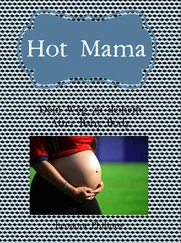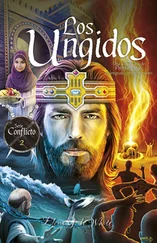‘We have to cut your hair.’
‘No.’
‘Your hair is the cause of your vanity.’
Ebony curls fall to the floor, forming a ring around Leonora, whose tears are tumbling out. She attempts to wipe them away with a lock of hair as she used to, but there isn’t any left long enough. Finally, the nun takes pity on her:
‘You look pretty with this haircut.’
‘I look hideous.’
Where are you, Lake Windermere? Where are you, Nanny?
The saints and martyrs in the chapel are fantastical beings who fly from one plinth to the next. A lion about to devour one of the first female Christian martyrs pauses beneath the ferocity of her glare and, instead of eating her up, throws himself at her feet imploring mercy. St. Patrick opens his arms to her, St. Ursula weeps salt tears, and in the convent corridors, stories are related of a nun whom the bishop himself visits. She bears the stigmata and every year during Holy Week the wounds made by the nails piercing her hands and feet open, and her side flows with black and viscous blood.
Leonora spends many hours in the chapel, inflamed by her devotion to the saints. She closes her eyes before the altar. She acquires the absolute conviction that her feet no longer touch the floor and she is levitating.
With her eyes tight shut, she informs the Mother Superior: ‘Mother I have just levitated.’ She also tells her that she can hear the plants grow at night and that she has seen a tiny tiger rowing his raft across the holy water stoup.
‘If I enter the convent and make my vows, shall I become a saint?’
‘It’s out of the question that a disobedient child and a fantasist such as you could make a saint!’
‘Joan of Arc is my source of inspiration, and I burn as fervently as she ever did!’
‘It is your pride that tells you this.’
The girl terrifies the Mother Superior, her behaviour ruffles the smooth surface of her certainties. She is different to the other girls in that she is slow to obey, as if she were leading a life apart. She suddenly breaks into prayer in a sonorous voice, finishing well after the others, her final Amen echoing back from the stained glass windows. What world is she living in? She unexpectedly punctuates the silent periods with incomprehensible pronouncements. ‘Ninety-nine horses in sheep’s clothing have just entered the chapel,’ she informs everyone. ‘Let’s go and play at being shepherdesses.’
The Reverend Mother is never pleased to cross her path. Impossible to catch hold of, furtive, light as a spirit, you never hear her approach. Mother Teresa watches her run in the garden or kneel in the chapel, and wishes she could make her disappear. In the refectory, while a nun reads aloud the life of Jesus, Leonora keeps her eyes glued to her and forgets to eat, or else interrupts inappropriately. ‘Was Christ a man or a crucifix?’, or ‘What is the purpose of the mortification of the flesh?’
‘May she depart from here rapidly! Her parents sent her to us to be turned into someone else. How can someone so far down the road into eccentricity become someone different?’
Her classmates don’t like her any better, she is a pariah who does not know what it means to belong to the upper classes, nor to be educated in this British convent school for the daughters of the privileged.
Leonora turns down shared daily duties and refuses to play with the others during break times. One girl vows she has seen her talking to herself. It is hard to engage with her inflammatory personality. Her eyes resemble two black billy goats — or black cats — or black bulls about to charge. She talks about the strangest things, and hides herself away in order to draw pictures of animals with human faces in her exercise book. She reddens the eyes of her horses and wild boars with blood-vermilion ink she makes herself, and she announces she’s not afraid of them, or witches, or ghosts. ‘Leonora has made a pact with the devil!’ In the convent there is always more talk of the devil than of Jesus Christ.
Long ago, witches were burned at the stake in Lancaster’s main square. The enclosed order of nuns are the brides of God or Jesus Christ, the Holy Spirit, or at least of St. Joseph. They undertake life in their cloister as if possessed, and awaken each morning with dark shadows under their eyes. They eat the same food as the girls. Leonora knows as much because she has seen the Reverend Mother at the porter’s lodge with a spinach leaf caught between her teeth. Occasionally, a lock of curly hair escapes from beneath their coifs. So they do have hair? They smell of sweat when the hour of the Angelus sounds. Their work-worn hands are tipped with blackened fingernails. What must their toenails look like? Leonora suspiciously avoids them as she does her classmates. She prefers the company of the sidhes . Mischievous and miniature, their accomplice Leonora instructs them to play with the nuns’ rosary beads, tug at their veils, or untie their shoelaces. Tomorrow they are bound to put salt in the jam at breakfast time.
‘Mother Superior smells like a goat.’
‘The devil too is a black goat.’
Leonora would like to befriend another restless soul but she can’t find a single one.
Her secret is to be different.
‘Silence!’
Silence engenders introspection. Or sleepiness.
Several of them fall asleep like cows during meditation hour.
Anything that breaks the everyday rhythm is unsettling. Leonora is capable of writing ambidextrously, even of writing backwards with her left hand. In earliest childhood her governess attempted to tie one hand behind her. But she takes up her pencil with her right hand and draws, then does so with her left, only better, using both hemispheres of her brain. The nuns consider her a queer fish. From the start Nanny had told her: ‘Only very few people can do what you do, it’s a gift, and when you write left-handed you do so without wobbles or scribbles or a single mistake.’ The nuns consider that, along with being a rebel, Leonora has some kind of a mental defect, since nobody can write and draw with both hands.
In the seventeenth century, Lancashire was a notorious centre of witchcraft. It lay under a layer of soot and its Neolithic boulders bore witness to its pagan past. Betrothed to Beelzebub, the witches in their towers transformed men into pigs or wolves. On the ground lie ancient stone wheels with strange hieroglyphs carved into them, and it is an historical fact that twelve persons accused of sorcery were hung one dawn on Pendle Hill. Even today, a tall dark tower rises over Lancaster and they say that cries and lamentations can be heard coming from its dungeons, where the prisoners were held until their death.
The Mother Superior becomes convinced that Leonora must be rusticated: this belief is further corroborated when one day the Mother Superior falls ill with flu, and Leonora relays a message informing her that a wagtail had landed upon her windowsill from Ireland to proclaim her imminent death.
‘Reverend Mother, you have but a few days to live.’
‘Child, the Mother Superior awaits you in her office.’
‘Did she not die?’
The father confessor and all the nuns of the Convent of the Holy Sepulchre determine to expel her. When she hears her sentence, Leonora holds her head up as high as would Winkie, her mare.
‘In addition to her extremely unusual conduct, your daughter has not managed to make a single friend, thus showing herself incapable of integrating into our community.’ So the Mother Superior informs Harold Wilde-Carrington.
He becomes enraged with Leonora and tells her: ‘You are a truly impossible child.’
Leonora is a floating leaf of paper that will combust itself, without anyone being able to do anything about it. Neither her mother nor her father can do a thing to avert a conflagration.
Читать дальше












